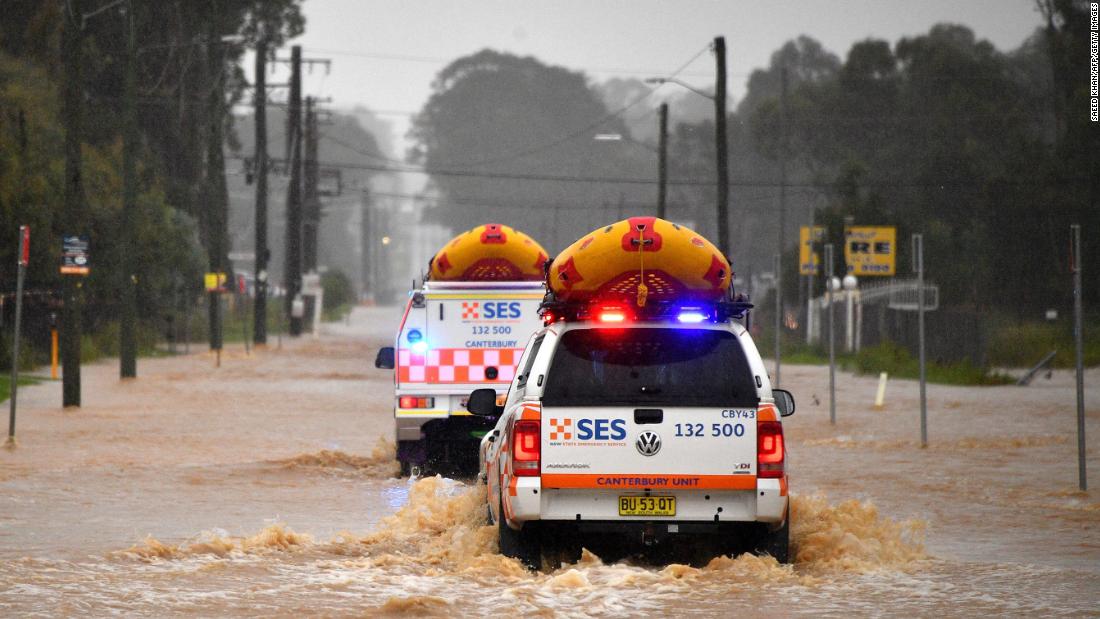Rains have flooded communities since Thursday, but parts of the east coast went into crisis on Saturday, with the overflow of a large dam, increasing the volume of rivers and causing flooding.
NSW and the federal government signed 16 natural disaster declarations in areas spanning the central and central north coast, from Hunter Valley, near Sydney, to Coff’s Harbor, NSW Emergency Services Minister David Elliott said in press conference on Sunday.
There have been no reported deaths yet – but, Elliott warned, “we are getting closer and closer to inevitable fatality.”
“We can’t say enough: don’t put yourself in danger, don’t put the agencies that are there to help you in the event of a flood rescue, endanger it,” he said.
Some families were forced to evacuate in the middle of the night as the rivers reached dangerous levels, and an additional 4,000 people – mostly in the Hawkesbury region – may have to evacuate on Sunday, state premier Gladys Berejiklian told a news conference.
“This is nothing like what we have seen since 1960,” said Berejiklian. In parts of the state that have been hardest hit, this is an event that occurs once a century; in other regions, like the Hawkesbury area, it is a “one in 50 years” event, she said.
Since Thursday, the State Emergency Service (SES) has responded to 7,000 distress calls and carried out more than 750 flood rescues. Thousands of emergency workers and volunteers are still at the scene, helping trapped residents.
Berejiklian urged residents to follow local guidelines, stay off the road and follow evacuation orders if necessary – even for those who live in flood-prone areas and may have experienced floods before. “This is different,” she warned. “What we are going through is different from what you have been through in the last 50 years. So take this seriously.”
Authorities do not yet know how many houses or infrastructure have been lost, but “the damage is substantial,” she said.
The declaration of natural disaster could be extended to the coast if the damage increases, said Elliott. The declaration allows those affected to receive financial assistance, including recovery from damage to homes, subsidies for affected livestock or agriculture and low or zero interest loans.
Heavy rain is expected to continue next week, with a range of rain expected to move across the state from the west, bringing significant rain to the inland and northwest slopes, said Agata Imielska of the Bureau of Meteorology. The most affected areas may have a total of more than four times the rainfall of March’s monthly average, falling in just two days.
Wednesday will be the first day of any postponement, with the forecast that the rains will turn into rain showers.
